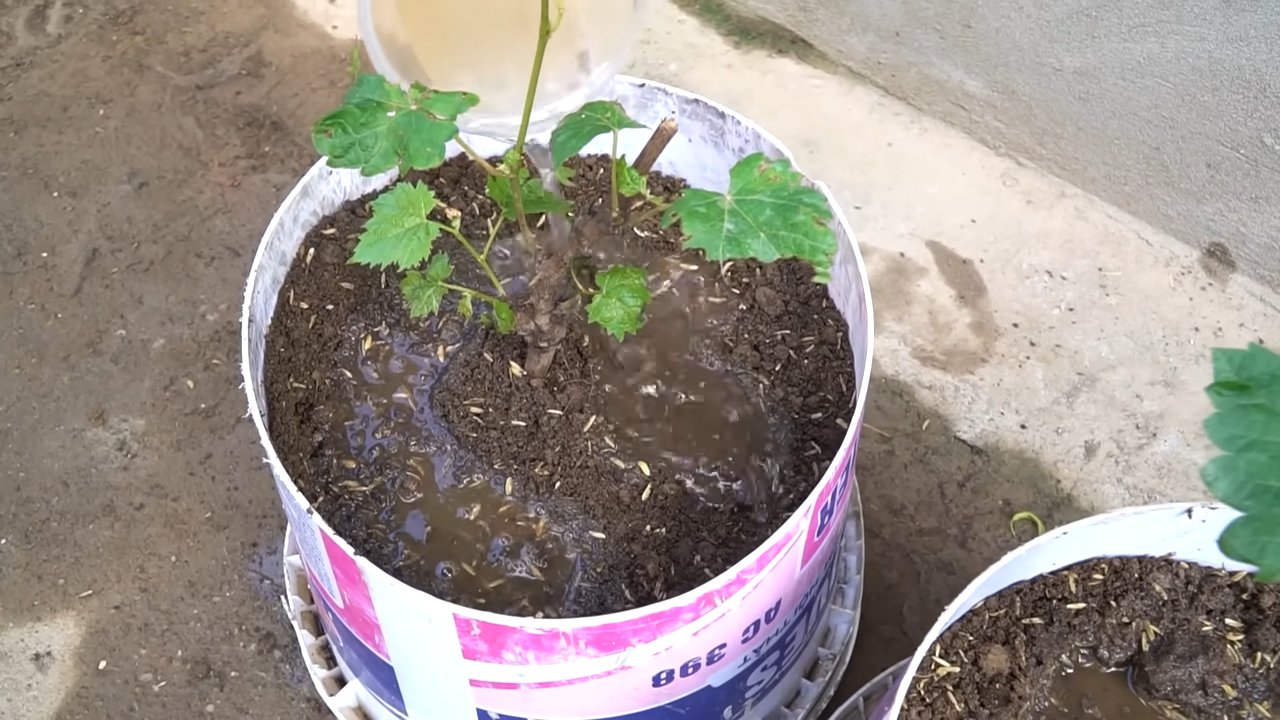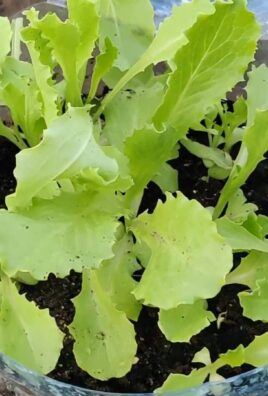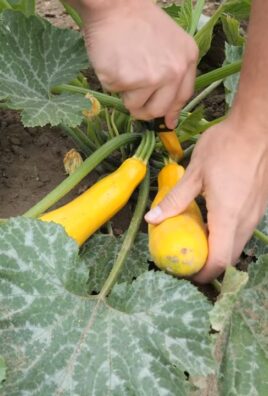Growing Grapes at Home might seem like a task reserved for sprawling vineyards in Napa Valley, but I’m here to tell you that with a little know-how, you can cultivate your own sweet, juicy grapes right in your backyard! Forget those expensive grocery store grapes – imagine plucking sun-ripened fruit straight from your own vine.
Grape cultivation boasts a rich history, dating back thousands of years to ancient civilizations in the Middle East. From the Egyptians who depicted grape harvesting in their tombs to the Romans who spread viticulture across Europe, grapes have always held a special place in human culture, symbolizing abundance and celebration. Now, you can participate in this time-honored tradition!
Why should you embark on this grape-growing adventure? Well, besides the obvious benefit of fresh, delicious fruit, growing grapes at home offers a fantastic opportunity to connect with nature, learn new skills, and enjoy the satisfaction of nurturing something from a tiny vine to a bountiful harvest. Plus, it’s a sustainable way to enjoy one of nature’s sweetest treats. This DIY guide will provide you with easy-to-follow tricks and hacks to ensure your grape-growing journey is a success, even if you’re a complete beginner. Let’s get started and transform your garden into a mini-vineyard!

Growing Grapevines in Your Own Garden: Your Comprehensive DIY Guide
Hello wine lovers! Have you ever dreamed of harvesting your own delicious grapes in the garden? I can tell you, it’s an incredibly rewarding feeling! It might seem a bit intimidating at first, but with the right preparation and some patience, you too can successfully grow grapevines. In this article, I’ll show you step-by-step how it’s done. Let’s get started!
The Basics: What You Need to Know Before You Begin
Before we dive into the details, let’s clarify some important basics. Choosing the right grape variety, location, and soil conditions are crucial for the success of your viticulture project.
- Grape Variety Selection: Not every grape variety is suitable for every climate. Research which varieties thrive in your region. Pay attention to resistance against diseases and pests. Some popular options for home gardens are ‘Regent’, ‘Solaris’ (both are fungus-resistant, PIWI varieties), or classic varieties like ‘Riesling’ if your climate is suitable.
- Location: Grapevines love the sun! Choose a location that receives at least 6-8 hours of direct sunlight per day. A south-facing slope is ideal as it makes optimal use of the sun’s warmth.
- Soil: The soil should be well-drained to avoid waterlogging. Grapevines prefer slightly acidic to neutral soils with a pH level between 6.0 and 7.0. A soil test can help you determine the pH and adjust it if necessary.
- Climate: Consider the length of the growing season in your region. Grapevines need a certain number of frost-free days to ripen. Find out the average frost dates in your area.
Step-by-Step Guide: How to Plant Your Grapevines
Now let’s get down to it! Here is a detailed guide on how to successfully plant your grapevines:
1. Preparing the Soil:
- Remove all weeds and grass from the planting area.
- Thoroughly loosen the soil, ideally to a depth of 60 cm (24 inches). You can do this with a digging fork or a spade.
- Improve the soil structure by incorporating compost or well-rotted manure. This ensures better drainage and nutrient supply.
- If your soil is heavy on clay, you can add sand to improve drainage.
- Conduct a soil test to determine the pH level and adjust if necessary. Lime can be used to raise the pH, while sulfur or acidic peat can be used to lower it.
2. Selecting the Young Plants:
- Purchase your young plants from a trusted nursery or vine propagator. Make sure the plants look healthy and are well-rooted.
- Choose own-rooted or grafted vines, depending on your preferences and the conditions in your region. Grafted vines are often more resistant to certain diseases and pests.
- The plants should ideally be one to two years old.
3. Planting:
- Dig a hole that is twice as wide and deep as the root ball of the young plant.
- Loosen the soil at the bottom of the hole to encourage root growth.
- Place the young plant in the hole, ensuring that the graft union (if present) is about 5-10 cm (2-4 inches) above the ground.
- Fill the hole with soil and press it down lightly.
- Water the young plant thoroughly.
- Mulch the area around the plant with straw or bark mulch to retain moisture and suppress weed growth.
4. Installing a Support System:
- Grapevines need a support system to grow and develop. You can use various types of supports, such as a trellis, a wire frame, or a pergola.
- Install the support system right after planting so the vine can grow up it from the beginning.
- Gently tie the shoots of the vine to the support system.
Care: How to Keep Your Grapevines Healthy and Productive
The work isn’t done after planting! Regular care is crucial for maintaining healthy and productive grapevines.
1. Watering:
- Water your grapevines regularly, especially during dry periods. Make sure the soil is evenly moist but not waterlogged.
- Avoid watering the leaves, as this can promote the spread of diseases.
- Drip irrigation is ideal as it delivers water directly to the roots.
2. Fertilizing:
- Fertilize your grapevines in the spring with a balanced fertilizer. Use a fertilizer specifically designed for grapevines.
- A soil test can help you determine the nutrient needs of your vines and adjust the fertilizer accordingly.
- Over-fertilizing can lead to excessive growth and lower fruit production, so be careful.
3. Pruning:
- Pruning is an essential part of grapevine care. It promotes fruit production and keeps the vine in shape.
- Pruning should be done in the winter when the vine is dormant.
- There are various pruning methods, depending on the grape variety and desired shape. Research the correct pruning method for your variety.
- Remove dead, damaged, or diseased shoots.
- Thin out the vine to ensure good air circulation and sun exposure.
4. Disease and Pest Control:
- Monitor your grapevines regularly for signs of diseases and pests.
- Some common diseases are powdery mildew, downy mildew, and grey rot.
- Some common pests are aphids, phylloxera, and grape berry moths.
- Treat diseases and pests early to avoid major damage. Use organic or chemical controls as needed.
- Good air circulation and sun exposure can help prevent diseases.
5. Leaf Management:
- In the summer, it may be necessary to remove leaves around the grape clusters to improve sun exposure and promote ripening.
- However, do not remove too many leaves, as they are important for photosynthesis and supplying energy to the grapes.
Harvest Time: The Reward for Your Hard Work
After all the work, it’s finally time for the harvest! The timing of the harvest depends on the grape variety, the climate, and the desired level of ripeness.
Harvest the grapes on a dry day to avoid rot.
Determining Ripeness:
The ripeness of the grapes can be determined by various factors, such as sugar content, acidity level, and taste.
Use a refractometer to measure the sugar content of the grapes.
Taste the grapes regularly to assess the flavor. The grapes should be sweet and aromatic.
Harvesting:
Carefully cut the grape clusters with scissors.
Be careful not to damage the berries.

Conclusion
So, there you have it! Growing grapes at home might seem daunting at first, but with the right knowledge and a little dedication, you can transform your backyard into a personal vineyard. This DIY approach not only saves you money compared to buying grapes from the store, but it also allows you to cultivate varieties that perfectly suit your taste and local climate. Imagine the satisfaction of harvesting your own juicy, sun-ripened grapes, knowing you nurtured them from vine to table.
This isn’t just about growing grapes; it’s about embracing a sustainable lifestyle and connecting with nature. Think of the possibilities! You can create your own homemade grape juice, delicious jams, or even venture into the world of winemaking. The grapes you grow can be used in countless recipes, from sweet desserts to savory sauces, adding a unique and personal touch to your culinary creations.
Don’t be afraid to experiment with different grape varieties. Consider disease resistance, ripening time, and flavor profiles when making your selection. For example, if you live in a colder climate, varieties like ‘Marquette’ or ‘Frontenac’ are excellent choices due to their hardiness. If you’re in a warmer region, ‘Thompson Seedless’ or ‘Flame Seedless’ might be more suitable. You can also explore different training methods, such as the cordon system or the cane system, to optimize your grape production.
Furthermore, consider companion planting to enhance the health and productivity of your grapevines. Planting herbs like basil or rosemary near your grapes can help deter pests and attract beneficial insects. Marigolds are also a great addition, as they repel nematodes and other soil-borne pests.
We highly encourage you to embark on this rewarding journey of growing grapes at home. It’s an investment in your health, your garden, and your overall well-being. The process is incredibly fulfilling, and the results are undeniably delicious.
Don’t just take our word for it – give it a try! Start small, learn as you go, and don’t be discouraged by initial setbacks. Every gardener faces challenges, but the rewards of homegrown grapes are well worth the effort.
We’re eager to hear about your experiences! Share your tips, successes, and even your failures in the comments below. Let’s create a community of home grape growers and learn from each other. What varieties are you growing? What challenges have you faced? What advice would you give to a beginner? Your insights could be invaluable to others who are just starting out. So, grab your gardening gloves, choose your grapevines, and get ready to enjoy the fruits (literally!) of your labor. Happy growing!
Frequently Asked Questions (FAQ)
Q: What is the best time of year to plant grapevines?
A: The best time to plant grapevines is typically in early spring or late fall, when the vines are dormant. This allows the roots to establish themselves before the growing season begins. In areas with harsh winters, spring planting is often preferred to avoid the risk of frost damage to newly planted vines. When planting in the fall, make sure to provide adequate protection from the cold, such as mulching around the base of the vines.
Q: How much space do grapevines need?
A: Grapevines need ample space to grow and thrive. Generally, allow at least 8-10 feet between vines in a row and 10-12 feet between rows. This spacing allows for adequate sunlight penetration and air circulation, which are crucial for preventing diseases. The exact spacing may vary depending on the variety of grape and the training system you choose. For example, vigorous varieties may require more space than less vigorous ones.
Q: What type of soil is best for growing grapes?
A: Grapes prefer well-drained soil with a slightly acidic to neutral pH (between 6.0 and 7.0). Good drainage is essential to prevent root rot, which is a common problem in poorly drained soils. Before planting, it’s a good idea to conduct a soil test to determine the pH and nutrient levels. Amend the soil as needed with organic matter, such as compost or well-rotted manure, to improve drainage and fertility. Avoid heavy clay soils, as they tend to retain too much moisture.
Q: How often should I water my grapevines?
A: Newly planted grapevines need regular watering to establish their root systems. Water deeply and consistently, especially during dry periods. Once the vines are established, they are relatively drought-tolerant and don’t require frequent watering. However, during prolonged droughts or periods of extreme heat, supplemental watering may be necessary. Avoid overwatering, as this can lead to root rot. A good rule of thumb is to water when the top inch of soil feels dry to the touch.
Q: How do I prune grapevines?
A: Pruning is essential for maintaining the health and productivity of grapevines. The best time to prune is in late winter or early spring, before the buds begin to swell. The goal of pruning is to remove dead, damaged, or diseased wood, as well as to shape the vine and promote fruit production. There are several different pruning methods, such as cane pruning and spur pruning, each suited to different grape varieties and training systems. Research the specific pruning requirements of your grape variety and follow a consistent pruning schedule.
Q: What are some common pests and diseases that affect grapevines?
A: Grapevines are susceptible to a variety of pests and diseases, including aphids, Japanese beetles, powdery mildew, downy mildew, and black rot. Regular monitoring of your vines is crucial for early detection and prevention. Use organic pest control methods whenever possible, such as insecticidal soap or neem oil. For fungal diseases, ensure good air circulation by pruning properly and avoiding overhead watering. Consider using disease-resistant grape varieties to minimize the risk of infection.
Q: How long does it take for grapevines to produce fruit?
A: Grapevines typically take 2-3 years to begin producing fruit after planting. The first year is focused on root establishment and vegetative growth. In the second year, you may see some small clusters of grapes, but the yield will be limited. By the third year, the vines should be producing a more substantial crop. The exact time frame may vary depending on the grape variety, growing conditions, and pruning practices.
Q: Can I grow grapes in containers?
A: Yes, you can grow grapes in containers, but it requires careful planning and management. Choose a large container (at least 20 gallons) with good drainage. Select a dwarf or compact grape variety that is well-suited to container growing. Use a high-quality potting mix and provide regular watering and fertilization. Container-grown grapes may require more frequent pruning and pest control than those grown in the ground.
Q: How do I know when my grapes are ripe?
A: Determining when grapes are ripe requires a combination of visual cues and taste testing. Look for changes in color, size, and texture. Ripe grapes will typically have a deep, uniform color and will be slightly soft to the touch. The stems will also begin to dry out. The most reliable way to determine ripeness is to taste the grapes. They should be sweet and flavorful, with a balanced acidity. The sugar content can be measured using a refractometer, but a simple taste test is often sufficient.





Leave a Comment